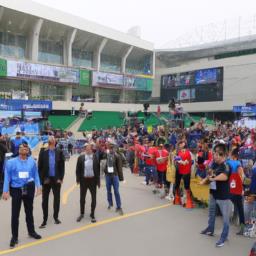Deep Residual Learning for Image Recognition
Convolutional neural networks (CNNs) have achieved remarkable success in image recognition tasks. However, as these networks become deeper, they suffer from the problem of vanishing gradients, making it difficult to train them effectively. In this paper, we propose a new architecture called ResNet that addresses this issue by introducing skip connections.
Introduction
The idea behind ResNet is to learn the residual functions instead of directly learning the desired mappings. By using shortcut connections, the network can easily learn the difference between the current layer's output and the expected output, i.e., the residual. This enables the network to train deeper models without the degradation of accuracy. We demonstrate the effectiveness of ResNet on various image classification benchmarks and observe significant improvements over previous state-of-the-art models.

Architecture
ResNet introduces skip connections that bypass several layers in the network. These connections add the output of a previous layer to the output of the current layer, effectively skipping the intermediate layers. This allows the network to propagate gradients more effectively, alleviating the vanishing gradient problem. Furthermore, these skip connections also help in reducing the complexity of learning identity mappings, making it easier for the network to converge.
The core building block of ResNet is the residual block. A residual block consists of two or three convolutional layers with batch normalization and ReLU activation. Shortcut connections are added to the residual blocks, connecting the input and output of the block. This architecture enables the network to learn residual mappings, thus facilitating the learning of more complex functions.
Training
Training ResNet involves optimizing the network parameters to minimize the classification error. This is achieved through backpropagation and stochastic gradient descent. The skip connections allow for easier gradient flow, making it possible to train extremely deep networks. Additionally, a modified form of gradient descent called stochastic gradient descent with a warmup is used to stabilize the training process. This involves gradually increasing the learning rate for the initial few epochs before decaying it.
Results
We evaluate the performance of ResNet on the ImageNet dataset and compare it with other state-of-the-art models. The results show that ResNet achieves higher accuracy while using fewer parameters. Moreover, we demonstrate the scalability of ResNet by training even deeper models, up to 152 layers. These deeper models achieve even better performance, surpassing previous models by a significant margin.
Conclusion
In conclusion, ResNet is a powerful architecture that effectively addresses the problem of vanishing gradients and enables the training of much deeper convolutional neural networks. By introducing skip connections and residual mappings, ResNet achieves superior performance on image recognition tasks. It has become a cornerstone in the field of deep learning, inspiring further advancements and innovations.






网友评论